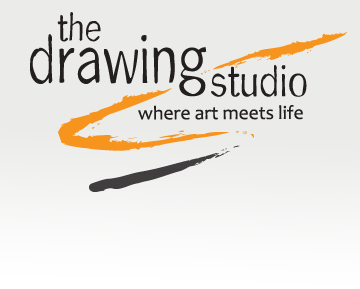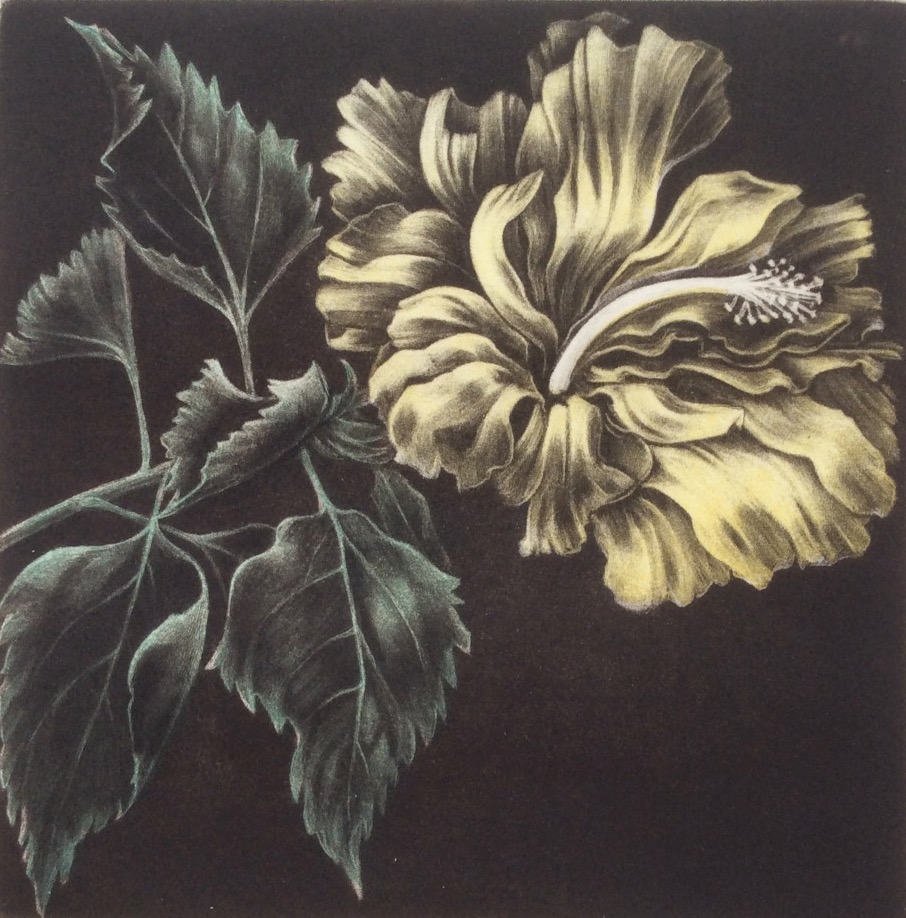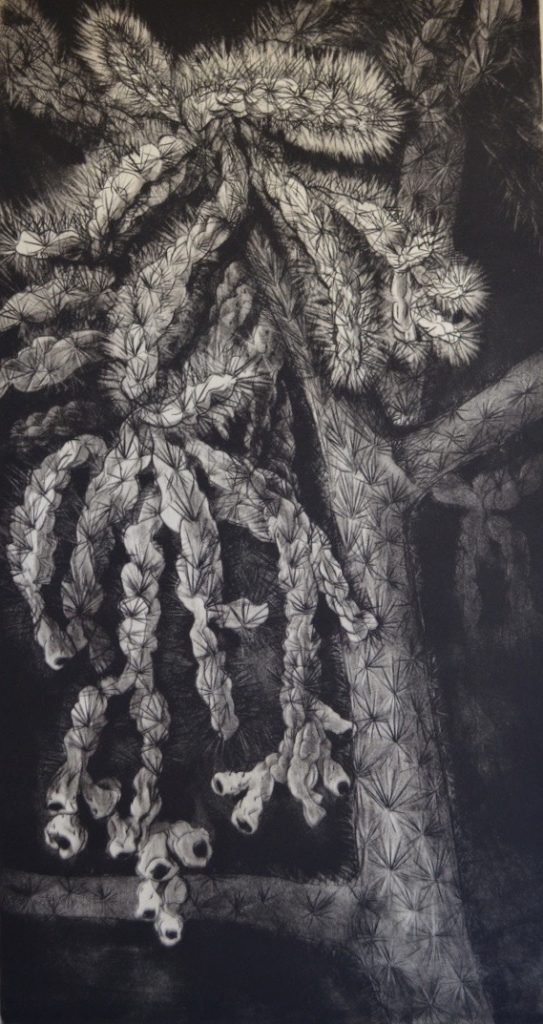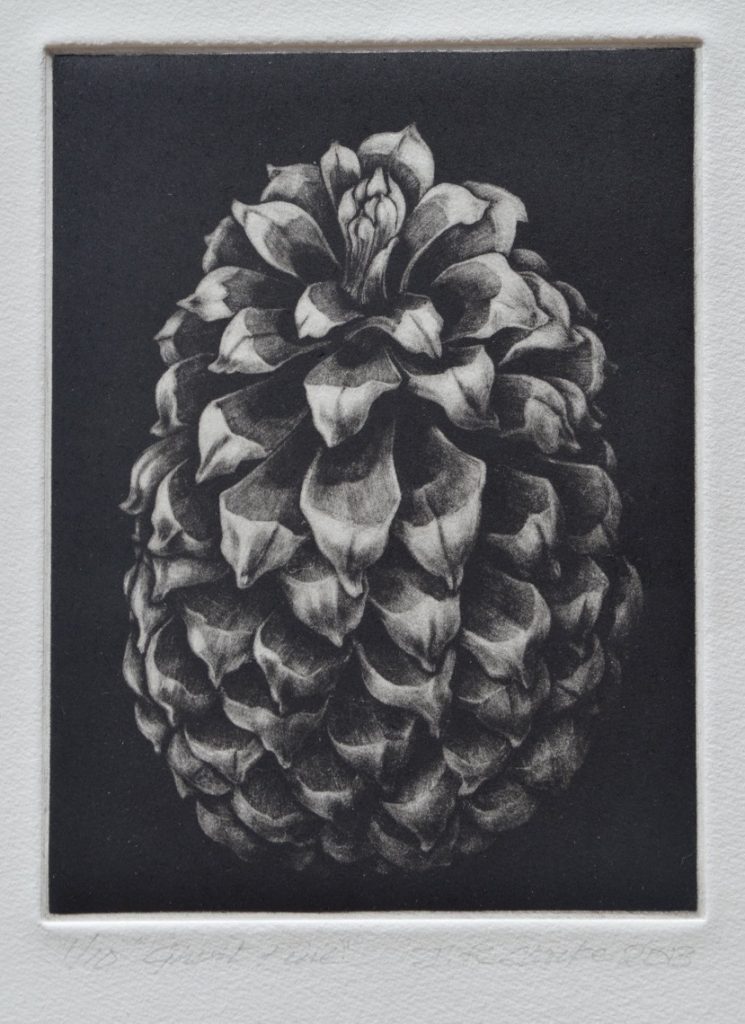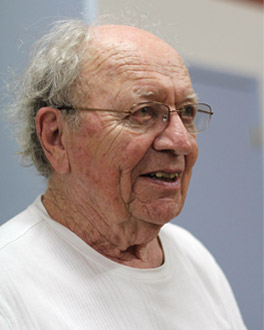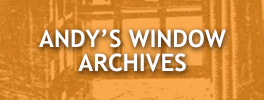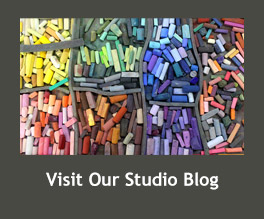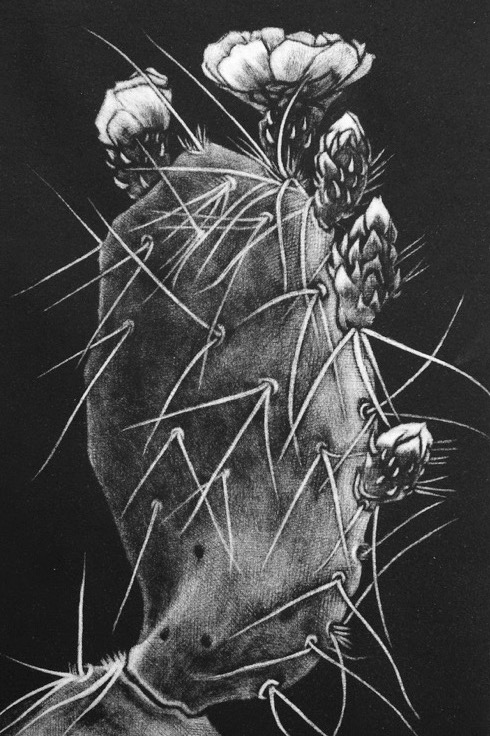
Prickly Pear Blossom
Of all of the many technical approaches to copperplate printmaking, one of the richest and rarest is the art of mezzotint. At TDS we have the good fortune of having a master of the medium as one of our printmaking instructors, Jennifer Clarke.
Jennifer was educated in both printmaking and sculpture in Europe. She maintained a print studio in Denmark for many years, before re-locating to Arizona. She is now one of the few modern masters of mezzotint, and will begin to teach Introduction to Mezzotint as part of our Printmaking Program at The Drawing Studio.
The first mezzotints date back to the seventeenth century in Europe. Basically it is a drypoint process, in which a copper plate is covered with microscopic burrs, produced by a steel-comb-lined rocker that the artist rocks across the plate hundreds of times in every direction (See tools, Figure 2). Because the burrs are so thick and dense, the inked plate releases onto the paper the most rich blacks of any print medium.
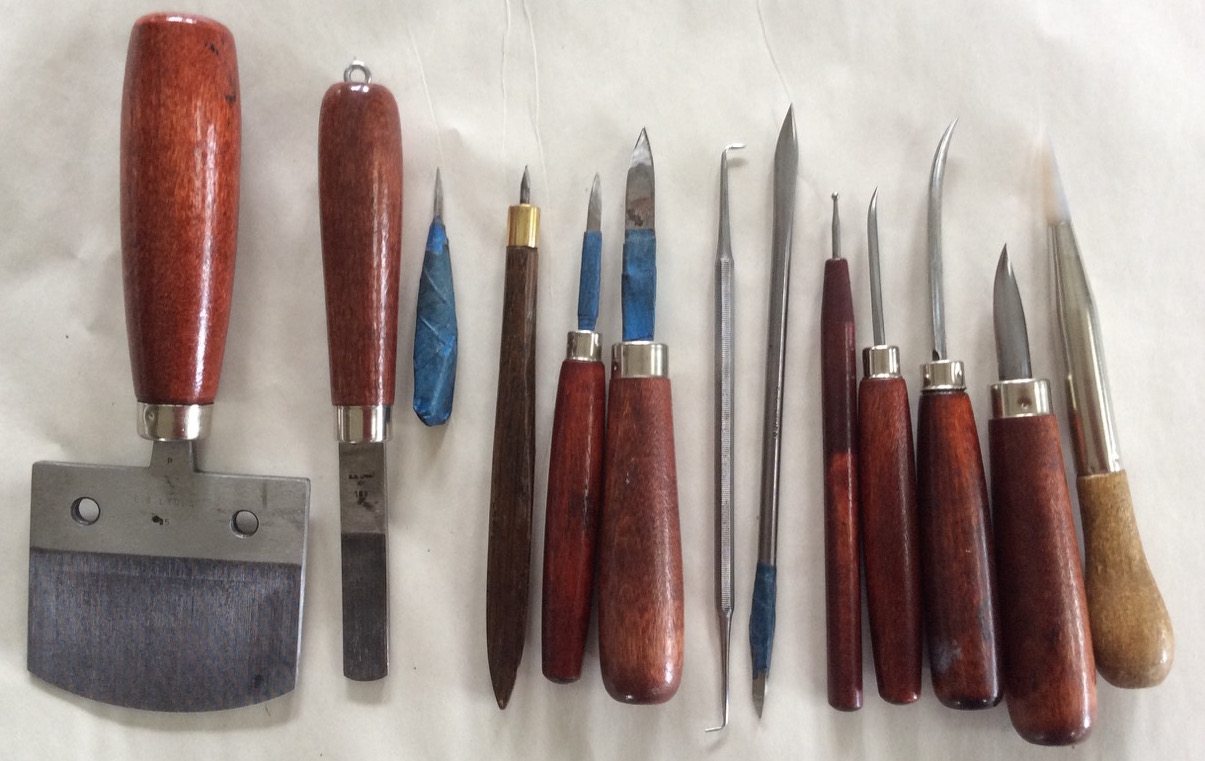
Tools for working the copper plate include mezzotint rockers, stylus needles, scrapers and burnishers.
Starting with the textured surface, the artist then ‘draws out’ (not unlike scratchboard) her image – burnishing or scraping the copper-burred-surface smooth or semi-smooth to create the richly and variously toned image in the mezzotint manner.
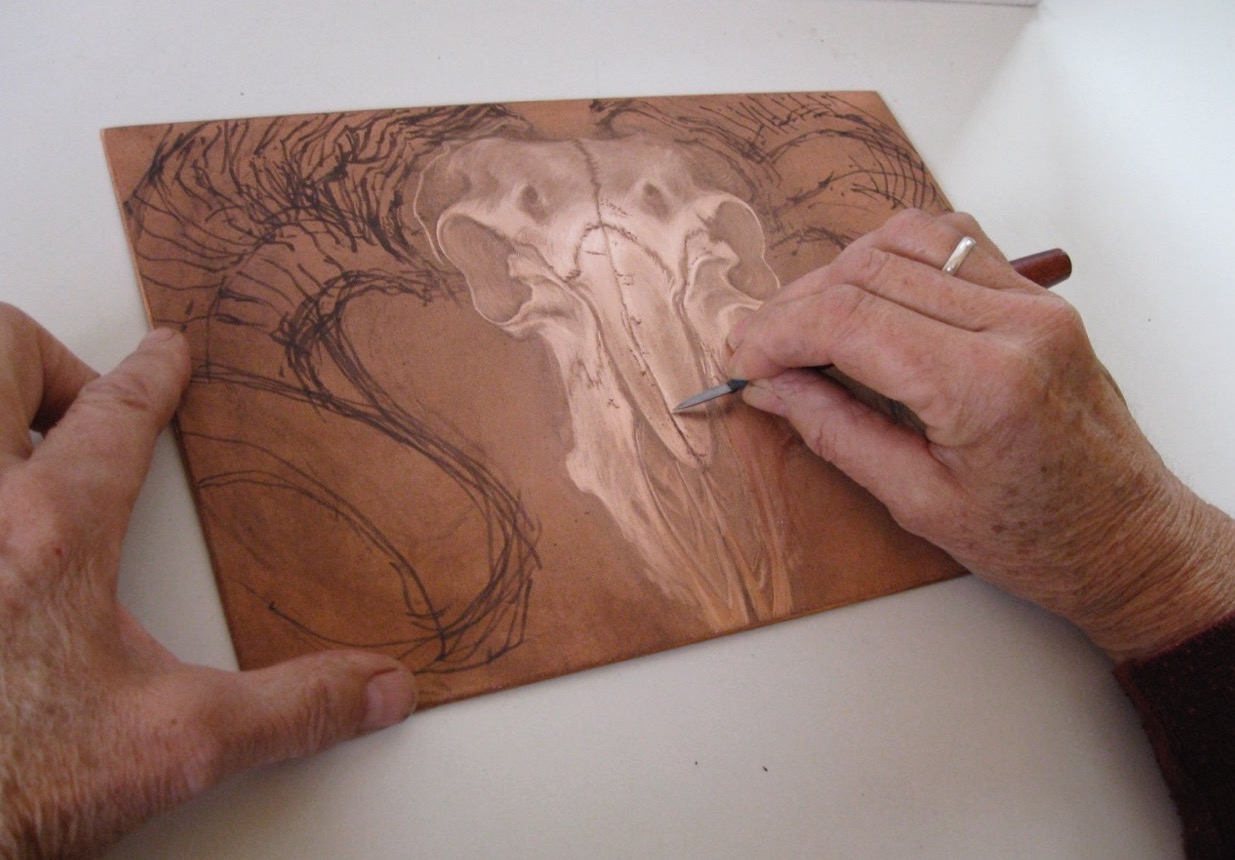
Working the copper plate with a burnisher
Study the four ‘Skullplate’ images shown, starting with the plate being worked with tools, the application of ink, and the final print. You’ll get a feeling for the incredible range of values and tactility accomplished with such simple means.
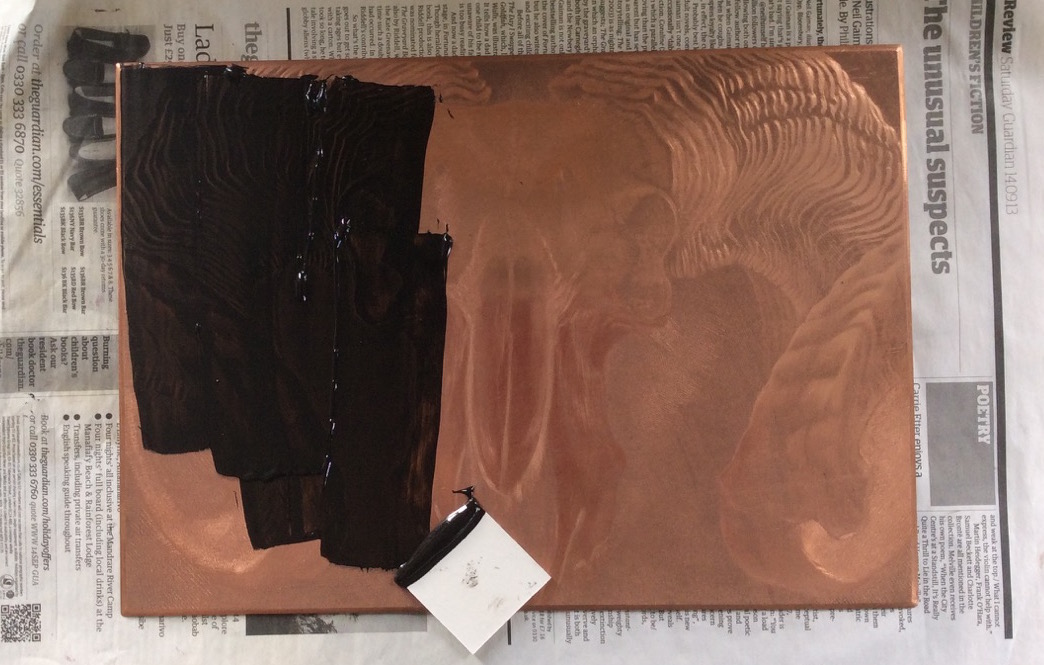
Ink is applied to the copper plate
As Jennifer espouses and demonstrates, she prepares her own mezzotint plates. Although commercially prepared plates are available, she points outs that the artist who works in mezzotint is well-served by learning to prepare the plate,which may take hours and hours of rocking the burr-maker, criss-crossing the copper plate over and over again. The reward is the personal ownership of the surface—which in turn creates from the very beginning a dialogue with the basic surface.
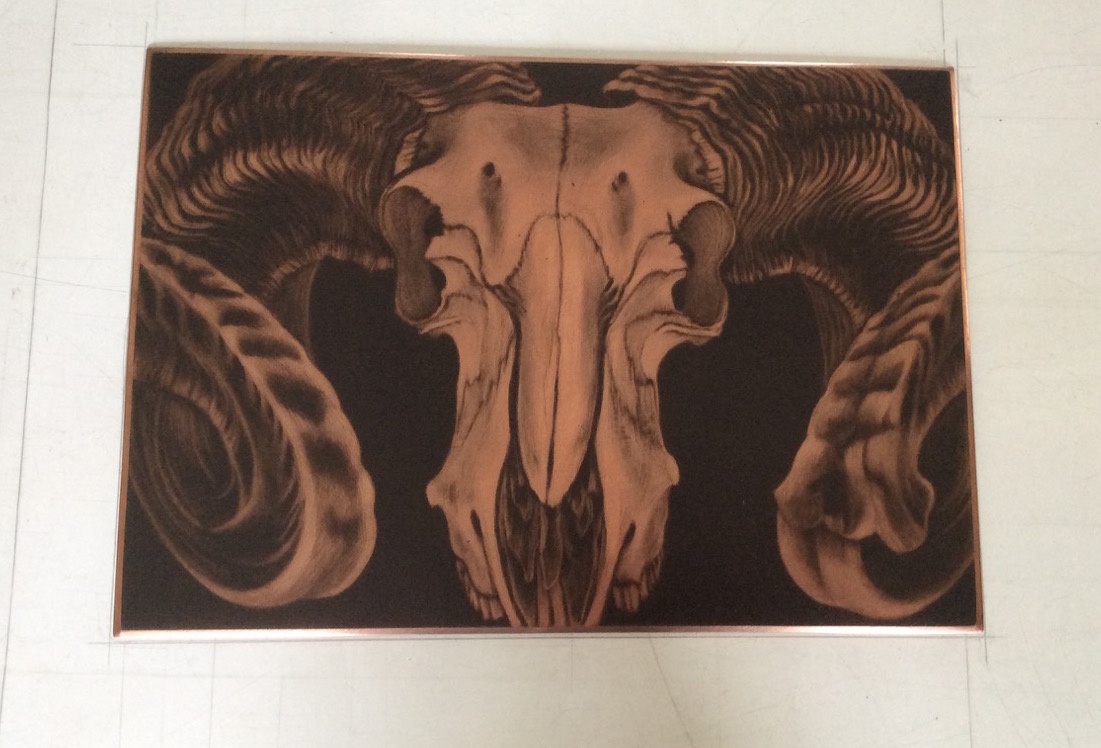
Inked plate, ready to print
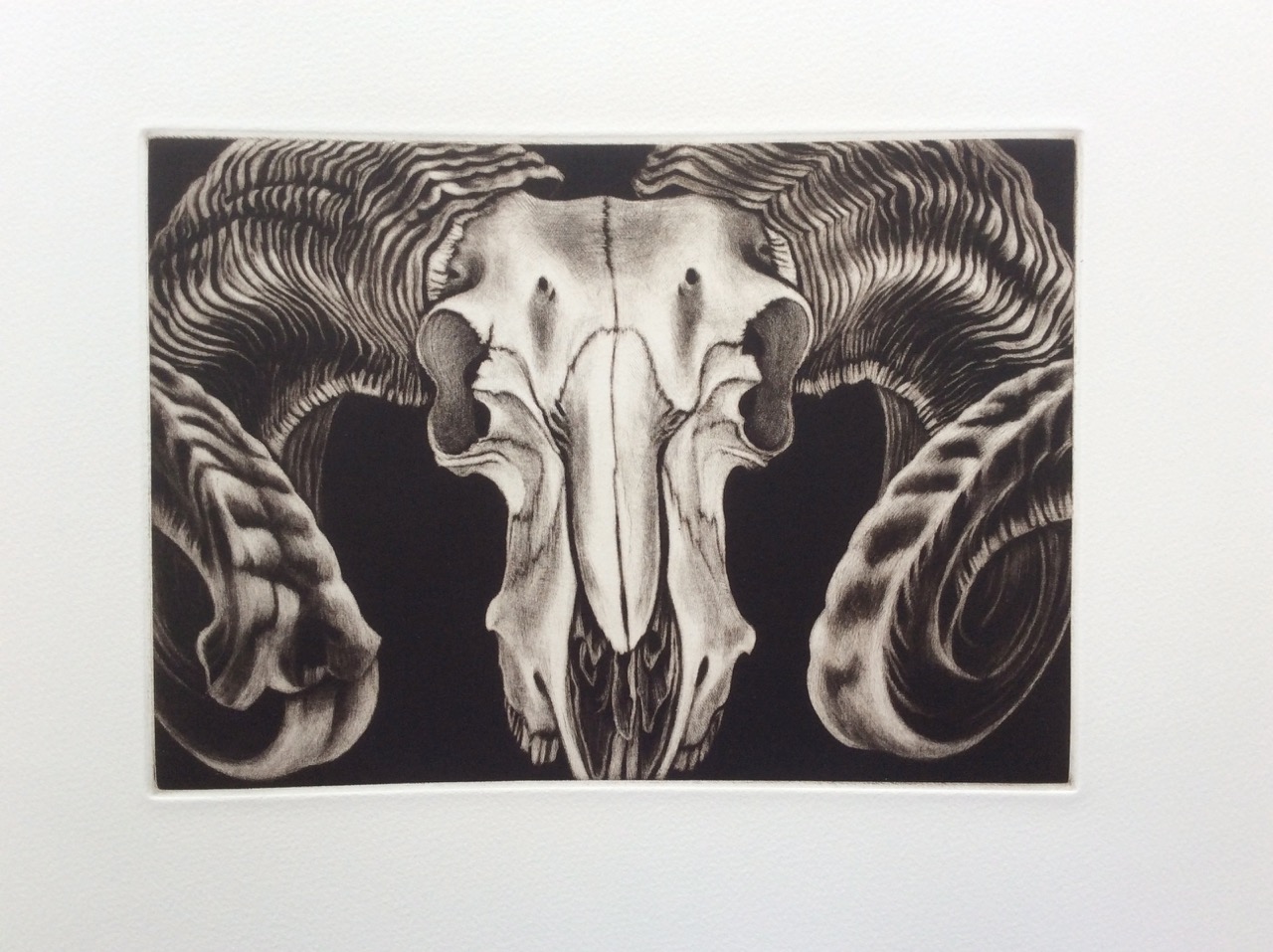
Final print
Preparing the plate also leads to a very keen state of attention to the hand skills of burnishing and scraping and polishing what you made, revealing slowly out of the dark black void the emerging image—slowly, slowly arriving at a luminosity unique to mezzotint. One can even add color to isolated sections of the plate (see slideshow below).
To my eye, Jennifer’s work reflects this subtleness of touch that it takes to make the burnisher or scraper to bring the lighter tones back out of the black field.
Then, in her printing process, Jennifer uses only traditional, petroleum based intaglio ink, printed onto a carefully dampened rag-paper, revealing the sculptural ‘kiss’ of ink to paper that gives the print a bas-relief presence.
The botanical origins of her compositions are also a showcase of the range of light and detail available with such simple tools. Jennifer brings a fresh eye to our desert plants that reminds us of the glory of what is under our nose. I find her large study of our desert cholla a luminous new seeing, and look forward to what else she will see anew for us (see slideshow below).
Jennifer’s Introduction to Mezzotint meets two Sundays, January 22 & 29, 9:30 AM – 4 PM. I urge readers of the essay to join her to experience the magic of this medium and its possibilities for your way of working.
